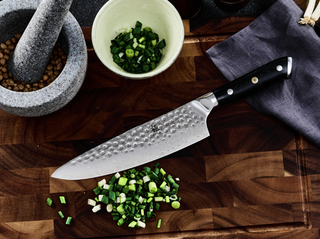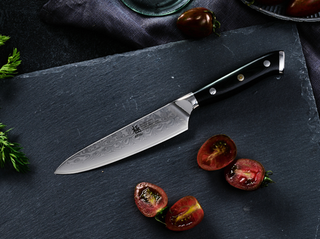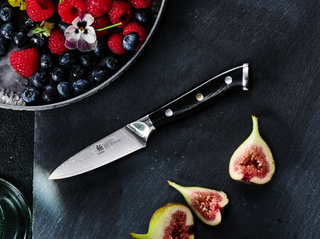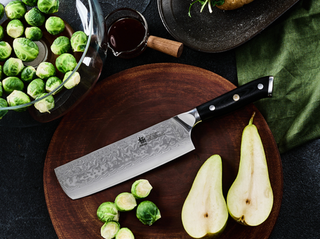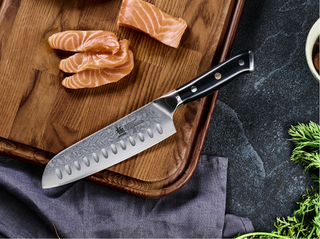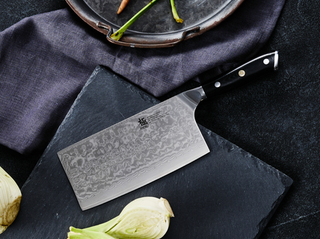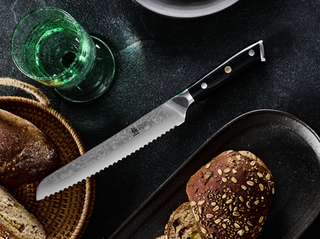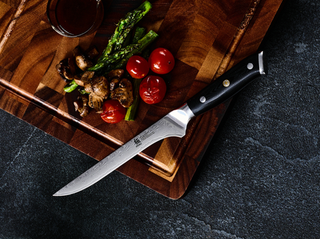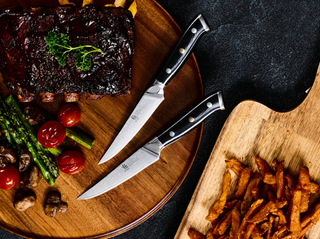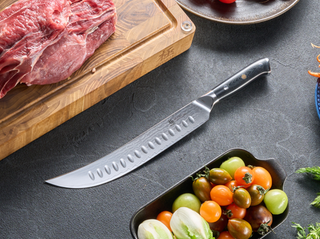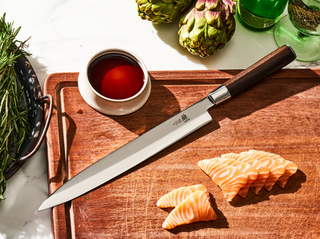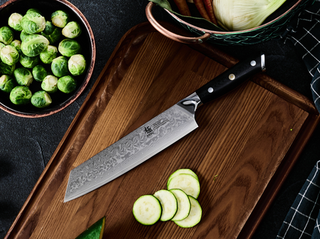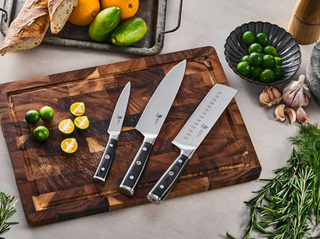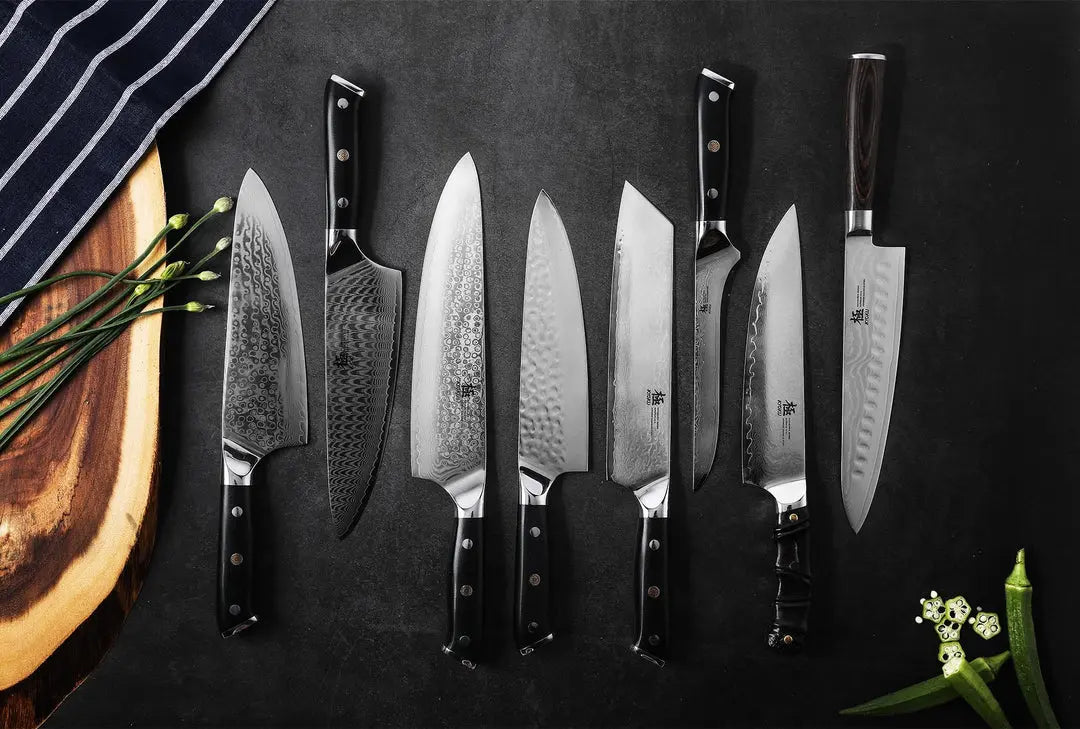Buying a first Japanese knife is not an experience that you get to have more than once: that is why people pay attention, and do everything to get it right the first time
Here is the biggest challenge when trying to decide on your first Japanese knife: there are loads of options on the market! The key is to settle for one that is sharp, durable, and versatile.
We have been in the Japanese knives market for several years, and we have watched thousands of customers buy their first Japanese knife.
Here are six key tips to help you choose the best first Japanese knife for your cooking style.

1. Pick the Right Style: Gyuto vs. Santoku
When it comes to buying your first Japanese knife, the two most popular options are Gyuto knives and Santoku knives, and you honestly cannot go wrong with any of these two. These are arguably the most versatile types of Japanese knives, and also easy to master for beginners.
To pick between a Gyuto and a Santoku knife, consider what you intend to primarily use the knife for.
If you do a lot of slicing and chopping, particularly of meat and bulky vegetables, a Gyuto should be your first Japanese knife. It has a longer blade that is smooth and can be used in that rocking action you watch chefs do.
A Santoku, on the other hand, should be your first choice if you mostly handle fish or fruit, where you need straight, clean cuts. It is shorter, lighter, and it has a flat blade. It is for excellent precision work and smaller hands.
Both styles make a good first Japanese chef knife, but the point this this: your choice should depend on your cooking habits.
2. Choose the Right Steel: Damascus Stainless Steel Wins
The performance and durability of a Japanese knife depend largely on the quality of the steel it is made of. Most Japanese knives are made of stainless steel, which is a great advantage, but there are different kinds of stainless steel.
Over time, you may get the time to explore some other options, but for your first Japanese knife, you want to go for steel that is tried and tested: Damascus steel. For a first Japanese knife, Damascus steel is worth the money.
Damascus steel lasts longer, does not rust as quickly, and provides just enough balance of strength so as not to make the knife heavy.
Here’s a tip for choosing Damascus steel Japanese knives: for a beginner, ignore the patterns and look for telltale signs that the steel is top quality.
Here are 3 signs of good Damascus steel on a Japanese knife:
- High-quality Damascus steel shows a well-defined, uniform wavy or flowing pattern across the blade. This pattern should not look painted or etched artificially.
- Inspect the spine or the choil (heel) of the blade. On a real Damascus knife, you’ll see visible stacked layers where the blade was ground down and polished.
- Check if the knife is made with a hard cutting core (like VG-10, SG2, or Aogami) sandwiched between Damascus cladding. This gives you performance and beauty.
For a first Japanese knife, the combination of balance and strength is perfect. Apart from Damascus steel, you can also look for sleek blades that are made of VG-10 or 440C steel.Carbon steel is also a good choice. These are trusted, edged, and simple to take care of.
To explore more Damascus knives, here's our guide on what makes Damascus knives special.

3. Pick a Comfortable Handle
The handle of a Japanese knife determines how easy and comfortable it is to grip and maneuver as you cut. I had an opportunity to use both WA-handles (traditional) and Western handles, deciding to choose the most comfortable one in my hand.
Wa-handles weigh less and facilitate finer work, and Western handles have more weight and are more balanced when chopping is heavy.
There’s no wrong option between the two, but try types of handles when buying your first Japanese knife, make some chopping motions, and go with your hunch, and pick which feels better in your hand.
4. Know How You’ll Maintain It
A good-quality Japanese knife is not a light investment that you will be changing every year, even if you have the funds to do so. People tend to get attached to their first Japanese knife, so it is important to keep in mind that you need the accessories to consistently maintain it in the long term.
For a Japanese knife, you need a whetstone knife sharpener, not any type of sharpener. You will need a medium-grit whetstone of a consistent 15-degree angle for sharpening.
The process of sharpening a Japanese knife may sound scary, but after you learn and practice, you will come to enjoy the art- yes, it is absolutely an art.
Frequent honing in between sharpening also assists. Unless you are not into this type of maintenance, it is important to take this into consideration when making a buying decision. You might want to explore these 5 ways to care for a Damascus knife.

5. Go for Performance Over Looks
Damascus knives are beautiful: they are crafted with the most complex and intricate patterns, which are the same time, alluring and just gorgeous.
These Damascus designs do mitigate and prevent the sticking of food, which is very much a game-saving feature.
6. Don’t Skip Sharpening and Maintenance
We cannot emphasize this enough. If you want your first Japanese knife to stay effective, regular maintenance is a must.
First, it is just as easy to get hurt with a blunt knife as it is with a sharp one. Also, leaving your Japanese knife blunt defeats the whole purpose of having a Japanese knife in the first place.
Pay some money to a good whetstone and learn to use it properly, as well as have it professionally sharpened every now and then. You will be surprised at how smooth your cooking process will be.

Top Picks for a Good First Japanese Chef Knife
Here are four fantastic options we’ve always recommended to first-time buyers of Japanese knives. Whether you're into Gyuto or Santoku, these cover all the bases.
1. 8" Gyuto Chef Knife | Samurai Series
This knife features top-tier Japanese carbon steel and a comfortable Pakkawood handle. It glides through fruits, vegetables, and meat with minimal resistance. The balance and cutting precision make it a reliable choice for both beginners and experienced cooks.
- Material: Japanese Carbon Steel
- Handle: Pakkawood
- Hardness: 56-58 HRC
- Edge Angle: 13–15°
2. 8" Gyuto Chef Knife | Daimyo Series
A stainless steel blade with 59–60 HRC gives this knife incredible edge retention. Its ergonomic rosewood handle feels great even after long prep sessions. Perfect for slicing, dicing, and mincing—a true all-rounder.
- Material: 440C Steel
- Handle: Rosewood
- Hardness: 59-60 HRC
- Edge Angle: 13–15°
3. 7" Santoku Knife | Daimyo Series
If you want precision and elegance, this one’s a winner. The 440C steel gives it excellent durability, while the rosewood handle adds a premium feel. It’s compact, balanced, and perfect for fine slicing.
- Material: 440C Steel
- Handle: Rosewood
- Hardness: 59–60 HRC
- Edge Angle: 13–15°
4. 7" Japanese Damascus Santoku Knife | Shogun Series
This blade is not only functional but a visual masterpiece. Made with 67 layers of Damascus steel and featuring a G-10 fiberglass handle, it’s razor-sharp and resistant to sticking. Ideal for clean, consistent cuts.
- Material: VG-10 Damascus Steel
- Handle: G-10 Fiberglass
- Hardness: 58–60 HRC
- Edge Angle: 8–12°
Final Thoughts
Buying your first Japanese knife is a big step, but it doesn’t have to be complicated. Concentrate on the style of cutting that you prefer and make your cooking more comfortable, and never underrate the efficiency of good maintenance. After making your choice, you will never have the same experience in your kitchen.
So, if you’re ready to invest in the best first Japanese knife, check out Kyoku’s full range. Their knives are made with superior and super accurate levels and are durable enough to suit any ardent cook.
Explore Kyoku’s premium collection and find the perfect knife for your journey today!
